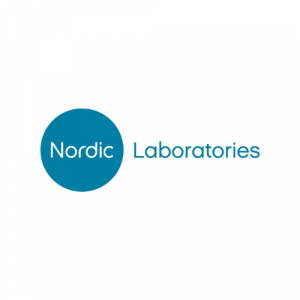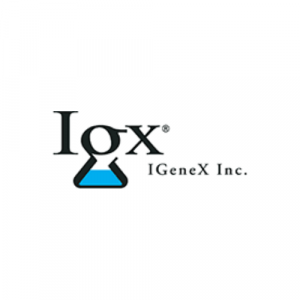

Feeling bloated, unusually gassy and dealing with constipation or diarrhea that feels life-altering?
Do you have IBS?
Maybe – IBS refers to irritable bowel syndrome-a highly common and frequently diagnosed (and frustrating!) chronic gastrointestinal disorder. It is characterized by frequent periods of abdominal pain, bloating and either constipation/diarrhea or both (3). Does this sound like you? Unfortunately, this diagnosis is a bit of a catchall and typically given without much recommendation around what to do to improve it. Not to fear-food can be your medicine! Say hello to the low fodmap diet-numerous studies have shown that a short-term low fodmap diet can improve and potentially resolve symptoms of IBS (1,2,3).
FODMAPS are certain types of carbohydrates known to cause gastrointestinal distress like bloating, gas pains and diarrhea or constipation. More specifically, FODMAP stands for: Fermentable Oligosaccharide, Disaccharide, Monosaccharide, And Polyols. Therefore, a low fodmap diet refers to a restrictive diet in which these types of carbohydrates are removed or greatly reduced. Funny enough, this diet isn’t necessarily “healthier”. It eliminates many commonly healthy foods like cauliflower and garlic-therefore it is extremely important that it is used short term.
These specific types of short-chain carbohydrates are poorly absorbed by the small intestine and therefore can ferment in the small bowel or the colon (1). They do this in two ways- they can cause an overall increase in osmotic activity or they can cause an increase in gas production (1, 4). Increased osmotic activity means that certain fodmaps pull water into the small intestine causing abdominal bloating, distention and potentially diarrhea (1). Examples of fodmaps that typically contribute to this symptom includes foods with excess fructose like sugar snaps, pears, honey and sugar alcohols like xylitol.
Secondly, fodmaps that aren’t absorbed well can be rapidly fermented in the colon leading to more gas and associated pain and bloat (3). Think: food baby/belly! Fodmap foods that tend to contribute to these types of gassy symptoms includes high fructan foods like garlic, onion, wheat and cashews. Therefore, a short term elimination should improve these symptoms-specifically, one study showed that up to 86% of patients with IBS found improvement in overall gut-related symptoms such as abdominal pain, constipation, diarrhea, bloating and unusual gas after following the diet (1).
It’s recommended to follow a 2-6 week low FODMAP elimination diet in addition to working closely with a dietitian/nutritionist (5). The goal is to avoid the high fodmap foods and keep the moderate fodmaps as low as possible during the elimination period (it’s called low fodmap not no fodmap for a reason!). In the chart below you’ll see the high fodmap foods to avoid. After the elimination period, the recommendation is to slowly add back high fodmap foods one at a time, with the guidance of a nutritionist. Typically, it is recommended to challenge in fodmaps at small doses first, working your way up to the larger portion you would typically eat. The outcome is that you should be able to decipher out only a few fodmaps that make you truly symptomatic for the long term.
This diet is meant to be short term! Why? It is not recommended long term due to the risk of nutrient deficiencies and potential altered gut microbiota (1, 5). As you can see below, many extremely healthy foods are left out of the diet and therefore, long term avoidance can set someone up for inadequate intake of fiber as well as vitamins/minerals. It is important to remember, these are not “bad” foods and the use in the diet is to “quiet down” your symptoms to then decipher out the small handful of foods that are the most triggering for you. Think of your gut like a messy, scribbly black board. The low fodmap diet is the eraser that clears away the mess to allow you to pinpoint the smaller chalkboard marks that are hard to see when the scribbles are there.
Need more digestive support? Schedule a visit with our functional medicine Nutritionist for an in-depth, individualized nutrition consult and meal plan.
High FODMAP Foods To Avoid:
| High Lactose | High Fructose | High Fructans | GOS | High Polyols |
| Soft cheeses Cow’s milk, yogurt & icecream |
Asparagus, sugar snaps, sun dried tomatoes Apples, cherries, fresh fig, mango, brown bananas Agave, corn syrup, honey, molasses |
Onions, shallots, garlic, scallion bulb (white parts), artichoke Dried fruits, grapefruit, nectarine, peaches Gluten Pistachio & Cashew Chicory root, carob powder, inulin Chamomile or oolong tea |
Most beans | Cauliflower, celery, mushrooms, snow peas Avocado Apricots, pears, plums, watermelon Sugar alcohols like xylitol |
IBS- Diarrhea: GI Alive
Inflammation: GI Alive, Fish oil
Gut balancing: Ultrabiotic, Mega Spore Probiotic, GutPro
Bacterial herbal support: Biocidin
General: Probutyrate, Magnesium
Click Here for Low FODMAP Recipes!
References:
© Copyright 2024 Five Journeys®. All rights reserved.


$85-$225 depending on insurance coverage.


At Home
Urine
$699
Fully covered by Medicare. Repeat test prices $249


This test evaluates the genetic profile for multiple health indicators. Click here for more information.
At home
Blood Spot


This company can test for lyme, babesia, bartonella and additional tick-borne illnesses. Click here for more information.
Blood
around $1600 (depends on panel selected)






Blood work for blood count, urinalysis and vitamin levels.
At any Quest Diagnostics Location
Blood
You often have to fast for these tests-please check your providers notes.




This test evaluates many measures including micronutrients, antioxidants, minerals, detox, overview of gut function, omegas and toxic exposure. Click here for more information.
At home.
Urine


This test evaluates the gut function and indicates microbiome balance, overgrowth, infection, inflammation, parasites and digestive efficacy. Click here for more information.
$179-$425 depending on insurance coverage.




Blood


This test evaluates the presence of potentially harmful heavy metals stored in the body. Click here for more information.
Testing: $79 x2 paid to Doctor’s Data
DMSA: $38 paid to Johnson’s Compounding Pharmacy


No insurance coverage


This test is designed to look at food sensitivities (IgG immune responses). It is available in both a 99 or 184 panel. Click here for more information.
Blood
$129-238